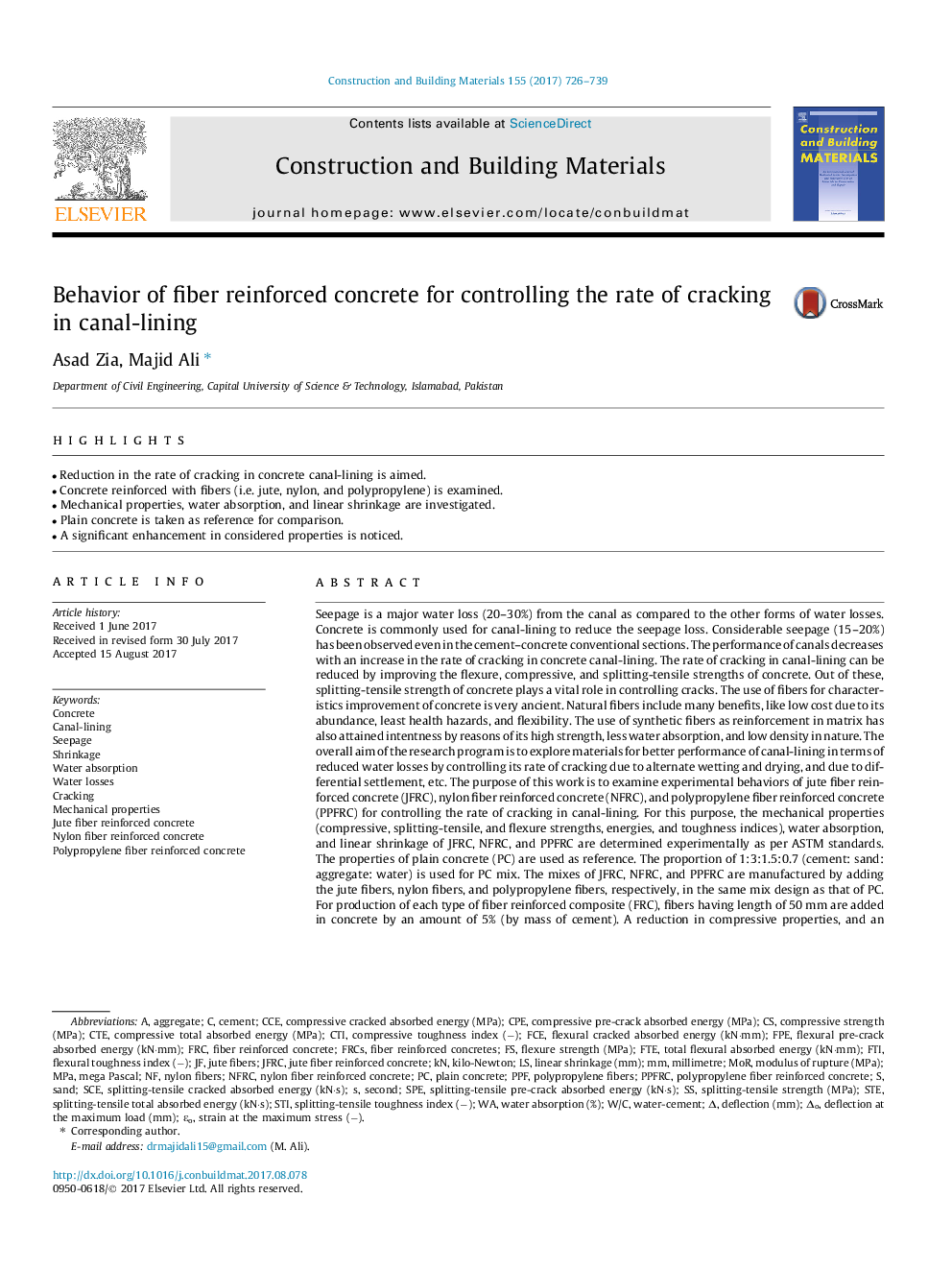| کد مقاله | کد نشریه | سال انتشار | مقاله انگلیسی | نسخه تمام متن |
|---|---|---|---|---|
| 4918114 | 1428751 | 2017 | 14 صفحه PDF | دانلود رایگان |
عنوان انگلیسی مقاله ISI
Behavior of fiber reinforced concrete for controlling the rate of cracking in canal-lining
ترجمه فارسی عنوان
رفتار بتن الیاف برای کنترل میزان ترک خوردگی در پوشش کانال
دانلود مقاله + سفارش ترجمه
دانلود مقاله ISI انگلیسی
رایگان برای ایرانیان
کلمات کلیدی
FRCMPACCESPEPPFSCEMORCPEFTiCTESTIFCEFTECTISTEFPE - FPBJute fibers - الیاف جوتNylon fibers - الیاف نایلونPolypropylene fibers - الیاف پلی پروپیلنShrinkage - انقباضPlain concrete - بتن خالصConcrete - بتن، بتونAggregate - تجمیعCracking - ترک خوردنWater losses - تلفات آبWater absorption - جذب آبMechanical properties - خواص مکانیکیw/c - دستشوییSecond - دومینCement - سیمانSand - شنFiber reinforced concrete - فایبر بتنmega pascal - مگا پاسکالmillimetre - میلی مترSeepage - هضم
موضوعات مرتبط
مهندسی و علوم پایه
سایر رشته های مهندسی
مهندسی عمران و سازه
چکیده انگلیسی
Seepage is a major water loss (20-30%) from the canal as compared to the other forms of water losses. Concrete is commonly used for canal-lining to reduce the seepage loss. Considerable seepage (15-20%) has been observed even in the cement-concrete conventional sections. The performance of canals decreases with an increase in the rate of cracking in concrete canal-lining. The rate of cracking in canal-lining can be reduced by improving the flexure, compressive, and splitting-tensile strengths of concrete. Out of these, splitting-tensile strength of concrete plays a vital role in controlling cracks. The use of fibers for characteristics improvement of concrete is very ancient. Natural fibers include many benefits, like low cost due to its abundance, least health hazards, and flexibility. The use of synthetic fibers as reinforcement in matrix has also attained intentness by reasons of its high strength, less water absorption, and low density in nature. The overall aim of the research program is to explore materials for better performance of canal-lining in terms of reduced water losses by controlling its rate of cracking due to alternate wetting and drying, and due to differential settlement, etc. The purpose of this work is to examine experimental behaviors of jute fiber reinforced concrete (JFRC), nylon fiber reinforced concrete (NFRC), and polypropylene fiber reinforced concrete (PPFRC) for controlling the rate of cracking in canal-lining. For this purpose, the mechanical properties (compressive, splitting-tensile, and flexure strengths, energies, and toughness indices), water absorption, and linear shrinkage of JFRC, NFRC, and PPFRC are determined experimentally as per ASTM standards. The properties of plain concrete (PC) are used as reference. The proportion of 1:3:1.5:0.7 (cement: sand: aggregate: water) is used for PC mix. The mixes of JFRC, NFRC, and PPFRC are manufactured by adding the jute fibers, nylon fibers, and polypropylene fibers, respectively, in the same mix design as that of PC. For production of each type of fiber reinforced composite (FRC), fibers having length of 50Â mm are added in concrete by an amount of 5% (by mass of cement). A reduction in compressive properties, and an improvement in splitting-tensile and flexural strengths, water absorption and linear shrinkage is exhibited by FRCs over that of PC. Among the tested FRCs, PPFRC shows better performance. This may ensure to control the rate of cracking in canal-lining, ultimately improving its performance.
ناشر
Database: Elsevier - ScienceDirect (ساینس دایرکت)
Journal: Construction and Building Materials - Volume 155, 30 November 2017, Pages 726-739
Journal: Construction and Building Materials - Volume 155, 30 November 2017, Pages 726-739
نویسندگان
Asad Zia, Majid Ali,
